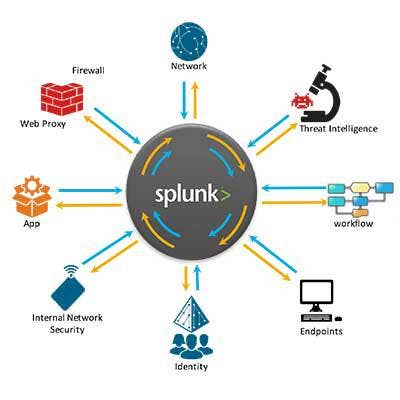IoT Channel Chronicles: How Function1 Used IoT To Make A University's Campus Police More Effective

Function1's IoT Plan For Education
More solution providers are looking to expand their businesses to include Internet of Things solutions. One such solution provider is Function1, which started in 2007 as a web experience management company and has roots in content management. In 2009, the Washington, D.C.-based Splunk partner began to expand its reach into data security, operational intelligence and the Internet of Things.
"In the IoT realm, so many people are just at the beginning of understanding what IoT is, and trying to wrap their heads around it," said Sandeep Khaneja, vice president at Function1.
Following is one successful IoT use case Function1 deployed with a large university, according to Khaneja.

What main vertical markets does Function1 work with?
We're industry-agnostic … but in terms of what industries we work with the most – we work with financial institutions the most, because fraud is a huge problem. Right after that is retail – that's wide and ranges from grocery stores down to multivendos stores like an Amazon or Alibaba. And then industrial, manufacturing, that type of thing.

Give us a use case of an IoT solution that you recently deployed. What was the idea behind the solution?
We just finished with [a large university] … we went to the campus police... The idea was that the technology exists on their campus between building sensors, badge sensors, Wi-Fi access points, cameras, student ID card readers – all of these things exists. And they could be used to narrow down the location of a person. So without trying to invade someone's privacy too badly, taking into consideration they are a public university, we said we would only like to apply this to students who were missing. So the idea, which we deployed, is that a concerned parent is looking for a child that they haven't heard from in two weeks. Instinctively they call the university police department and say they haven't heard from their kid. At that point in time, how do you find the student?

How did the IoT solution work? What technology did you use for the solution?
The easiest thing to do based on what's built now, is to pull up – this is running on Splunk -the Splunk interface, and type in the student's ID number, which the campus police have, and it shows you on a map where the person has been badging in and out of for the last 24 hours. If you're familiar with wireless access points, they're basically every hundred yards – then since everyone's on Wi-Fi, it can tell where on campus they currently are if their phones are active. Because they're basically jumping from access point to access point as they move around campus.
Then, because we have access to digital video, we can pull up the camera feed for that location. You embed the camera feed into the dashboard you're looking at, and most university cameras are able to pan, so you set up a panning algorithm that pans the range of the access point. You basically get a visual on wherever the person is based on the access point. … Then you go send campus police to tell that student to call their mom.

So how did all of this ultimately benefit your customer?
If you think of the number of technologies to get from Point A to B, and then Point B to C all the way to the end, it's quite a bit – but it also drastically cuts down on mis-utilized campus police resources.

What platform did you use for the IoT solution? Who were you mainly talking to on the customer side of the project?
Mainly on the Splunk platform – we were lucky because they used a video feed with an API available. That's not always the case. If it's any type of modern institution, there's API available. On the university side, including industrial manufacturing, large warehouse situations – typically the chief security officer is responsible for information and physical security – so the CSO is usually the person you have to talk to, and getting that person's time is very difficult.

How long did the project take you? What was the longest part of the sales cycle?
The sales cycle took about 14 months, from the moment we reached out to the first person to the moment that the division signed all the paperwork. So that was 14 months, and probably 80 different people to get to the right person. But boots on the ground, in terms of implementation time, I think it was about three weeks.
The longest part of the sales cycle was getting to the right people – finding the right people to talk to. Once you found that, the educational system – and this is true throughout the entire system – the people in those decision-making positions leave. They're only around for a couple years at most, so this has happened so many times. It's finding the right people and for the implementation side of it, the largest amount of your time will be spent in integrating third-party systems – so for us, anything that's not Splunk.

What skill sets would you recommend solution providers who are starting out in IoT build up?
There's a couple different facets to being able to enter the market and also be successful at it. From a skill set perspective – there's the functional customer-facing entrepreneurial innovative side of it. On the technical side of it, you're really looking for somebody who is a solutions solver. Someone who can not only solve a problem, but also be able to proactively identify what is causing that problem, what things are feeding into the problem, and provide the solution.